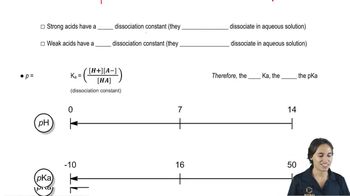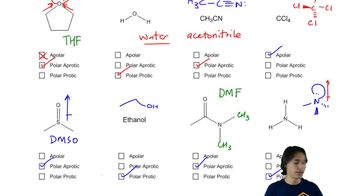For each of the following compounds (here shown in their acidic forms), write the form that predominates in a solution with a pH = 5.5:
c. H3O+ (pKa = −1.7)
d. HBr (pKa = −9)
 Verified step by step guidance
Verified step by step guidance Verified video answer for a similar problem:
Verified video answer for a similar problem:



 5:11m
5:11mMaster The 3 steps for determining the direction of acid and base equilibrium. with a bite sized video explanation from Johnny
Start learning